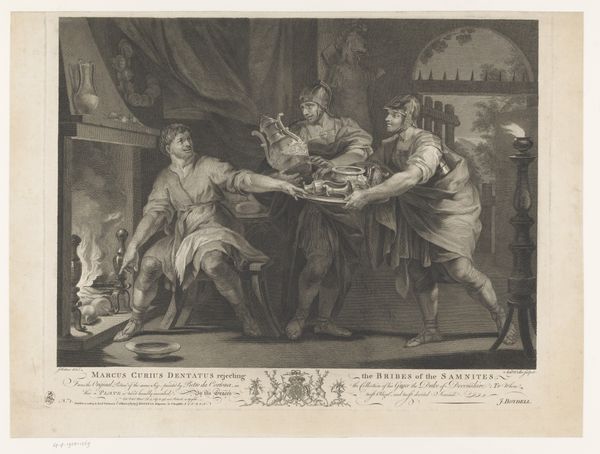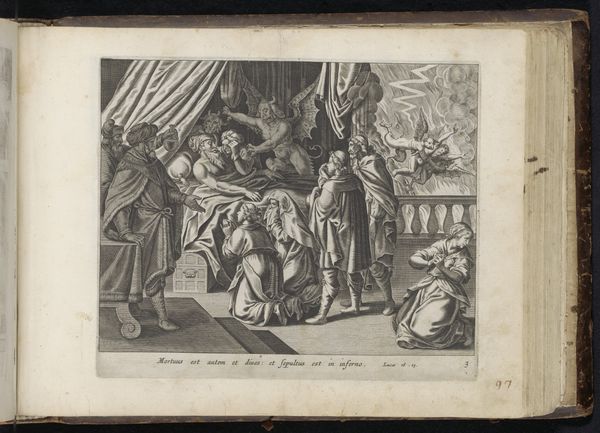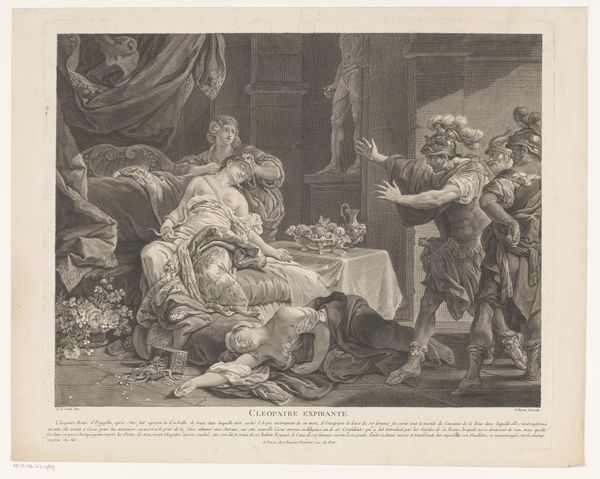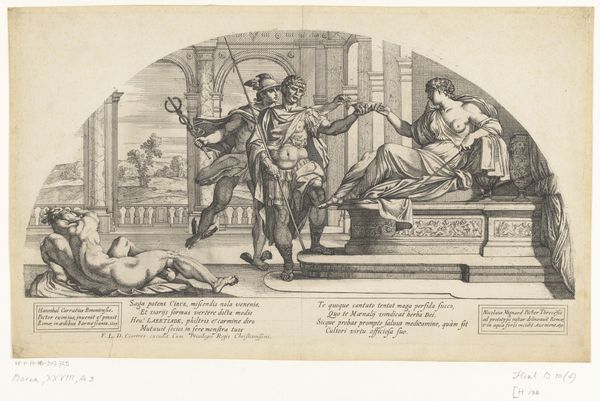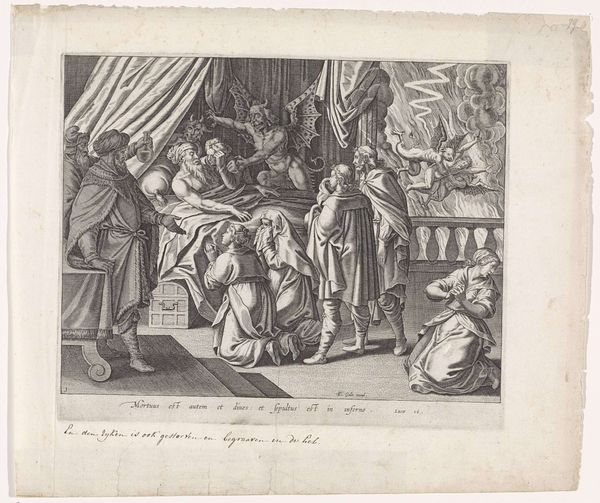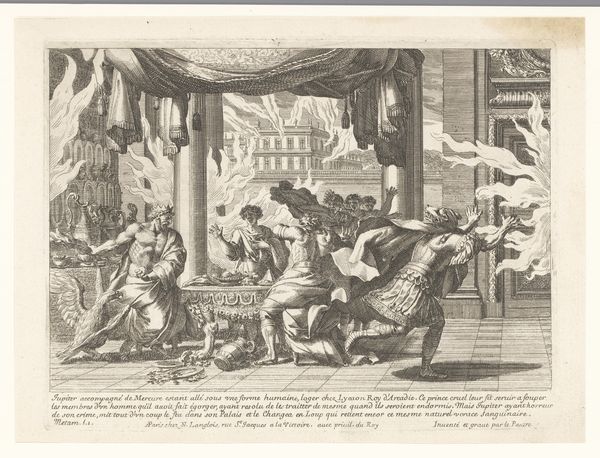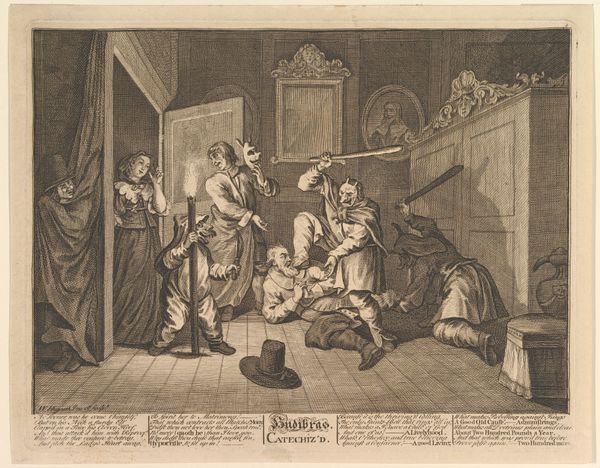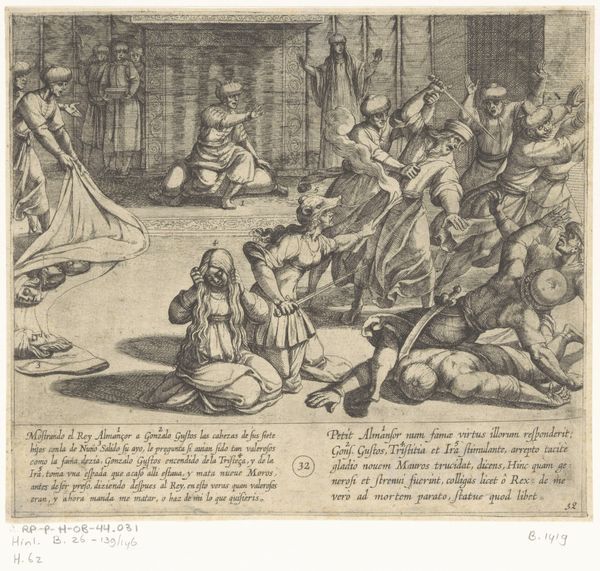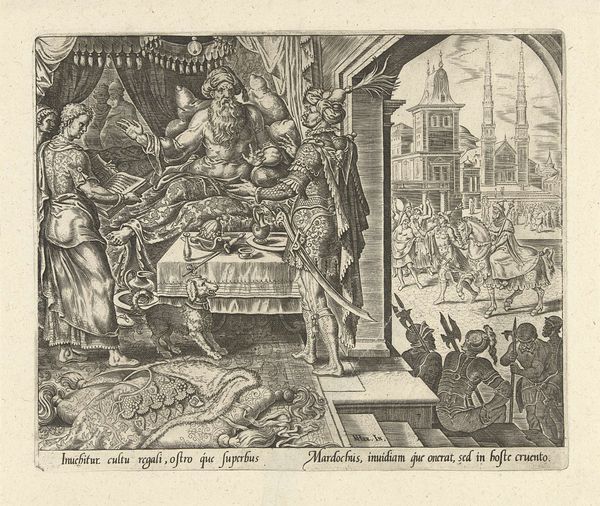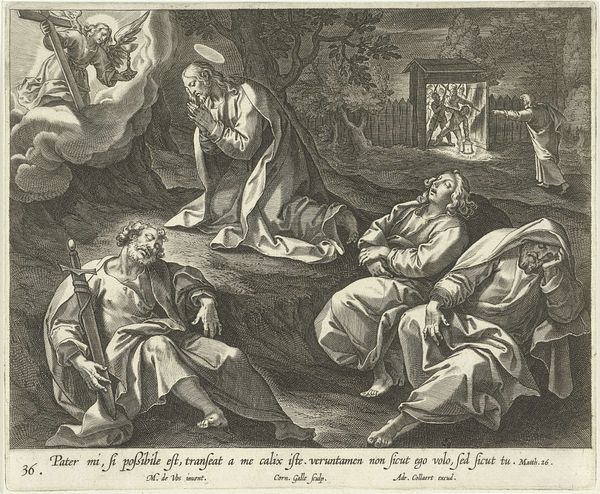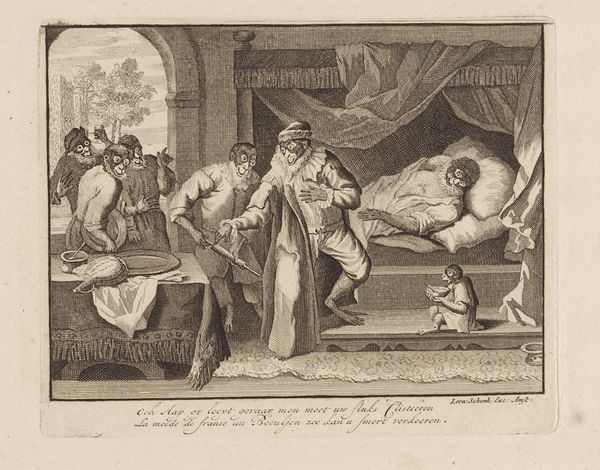
print, etching, engraving
#
allegory
#
narrative-art
# print
#
etching
#
mannerism
#
figuration
#
history-painting
#
engraving
Dimensions: plate: 18.6 x 26.5 cm (7 5/16 x 10 7/16 in.) sheet: 20.5 x 27.1 cm (8 1/16 x 10 11/16 in.)
Copyright: National Gallery of Art: CC0 1.0
Editor: This is Hendrick Goltzius's 1589 engraving "Lycaon Changed into a Wolf". The scene is so chaotic. There’s a figure transforming, a building on fire… it's incredibly dramatic. What do you see in this piece, from an art historical and societal point of view? Curator: This engraving offers a potent narrative ripe with commentary on power, transgression, and transformation, which speaks volumes about its time and our own. I'm immediately drawn to the concept of justice, especially in the wake of horrific actions. Note how Lycaon's transformation can be interpreted as divine punishment, yet also as a symbol of the dehumanizing consequences of unchecked authority and moral decay. Editor: Dehumanizing consequences? Can you elaborate? Curator: Absolutely. Lycaon, in Ovid’s narrative, tests Zeus by serving him human flesh, a heinous violation of hospitality and natural law. Goltzius visualizes this through Mannerist distortion, emphasizing the grotesque and unsettling nature of this transformation. However, the scene raises pertinent questions about how power responds to such offenses. Does such punishment truly restore justice, or does it perpetuate a cycle of violence? Can dehumanization ever be a righteous path? Editor: I never thought about it that way before. So, this isn’t just about mythology, but also a reflection on the structures of power and the consequences of our actions? Curator: Precisely. Look at the burning building. What could that symbolize? Is it just divine wrath, or could it also represent the destructive potential within society itself? We need to examine the role of art and artists during times of upheaval. Were they merely reflecting their society or actively shaping it? Editor: That is a powerful and timely consideration, given contemporary societal challenges, such as government, race and gender. It’s a reminder that even historical art can spark critical thought about issues we're still grappling with today. Thank you. Curator: It also reminds us that understanding these artistic dialogues through a historical lens gives us fresh perspective on these important social topics.
Comments
No comments
Be the first to comment and join the conversation on the ultimate creative platform.
